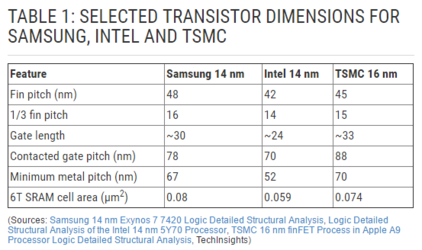-
Welcome to Overclockers Forums! Join us to reply in threads, receive reduced ads, and to customize your site experience!
You are using an out of date browser. It may not display this or other websites correctly.
You should upgrade or use an alternative browser.
You should upgrade or use an alternative browser.
FEATURED AMD ZEN Discussion (Previous Rumor Thread)
- Thread starter Johan45
- Start date
- Joined
- Aug 16, 2009
We shall see. I am waiting but right now not sure if the funds are available...... 2016 was a bad year for me. Was just in at Canada computer they quoted March 3rd release. He wouldn't comment if this was just a rehash of online rumors or something more.
- Joined
- Jan 12, 2012
Ditto!I can't wait to get my hands on one
- Joined
- Jul 7, 2013
So if Zen were able to match any newer architectures, like, say, Broadwell, how do you guys think that would affect their pricing decisions? Obviously a Haswell IPC is what makes it easy to put the prices so low, people wouldn't pay new prices for old performance, I'm just curious how much higher you guys think the prices would be if it was a Broadwell competitor.
Found something interesting this morning, not much info but here's the meat of it. http://www.eetimes.com/document.asp?doc_id=1331317&page_number=2
View attachment 187922
So this bit of info is really cool. It shows that AMD engineers spent a long time trying to squeeze things together. For what reason, I don't know but its probably because they could do it since they were so focused on power saving. Even though Intel has a better Fin Pitch footprint than AMD/GoFo, AMD was able to pack everything into a smaller die. The relationship of memory to die size, or any sector to die size is non continuous and non sequitur. What you should take away from this is that AMD/GoFo is the only company to have gotten within 10% of the pitch footprint as Intel. Big deal for current leakage control, which in turn helps with OC % ability. How this affects the chip will be unknown for some time.
Last edited:
- Joined
- Mar 7, 2008
I followed up on my previous question, and the areas quoted for Intel are far below the die size of Skylake (presumably not that different for KL). So, I will assume they did a like for like comparison of the cores and caches. Without knowing more about what they packed into that area, we still can't say if they are doing the same as Intel but smaller, or if perhaps they're doing less in some still unknown way.
- Joined
- Dec 18, 2000
A Ryzen price list at shopblt.com with part numbers.
So this bit of info is really cool. It shows that AMD engineers spent a long time trying to squeeze things together. For what reason, I don't know but its probably because they could do it since they were so focused on power saving. Even though Intel has a better Fin Pitch footprint than AMD/GoFo, AMD was able to pack everything into a smaller die. The relationship of memory to die size, or any sector to die size is non continuous and non sequitur. What you should take away from this is that AMD/GoFo is the only company to have gotten within 10% of the pitch footprint as AMD. Big deal for current leakage control, which in turn helps with OC % ability. How this affects the chip will be unknown for some time.
What about the extra space used for the Intel IGPU?
A Ryzen price list at shopblt.com with part numbers.

What about the extra space used for the Intel IGPU?
Like I said, die size does not matter, nor does the size of the area some sector takes. What's important is the Pitch footprint of the FinFet transistors that AMD, Intel, Samsung, Toshiba, Micron, and every other silicon company uses to date, has almost trumped the biggest player of them all: Intel. I've mentioned this before in other threads, the point I'm making is that the leading silicon company of the world, Intel, has had an edge in even the same nanometer FinFet footprint that every one uses today. Its so large, that most companies are not even going for the same fin or pitch size, and going straight to 10nm (which in most cases is close to 12-15nm for some of these silicon companies). Companies using Intel's model get to call it 14/16nm, 10nm, 7nm, etc because they use the foot print developed by Intel, and Samsung. Intel doesn't just hold all of its secrets, it contributes and writes standards for a lot of the silicon industry in almost every segment of the market. The information we got today was because AMD and Intel both shared their success in silicon fabing at the ISSCC (http://isscc.org/index.html). Its by far one of the most important technological gatherings each year.
Now to the point of all this, TLDR people: AMD/GoFo did considerable work to catchup to Intel. So much so that they solved a lot of their old issues in power and branch prediction. This gives them a huge leap over their last generation and will create a competing chip for Intel. The degree is unkown and will be found out in a months time. So say we all!
For reference, here is the other companies production quality of 14/16nm FinFet production:

Source: http://www.electronics-eetimes.com/news/samsung’s-14-nm-lpe-finfet-transistors/page/0/3
Last edited:
- Joined
- Sep 19, 2015
YAhoo! <$500! Yummy!!!
WithOut Fan?Ooh, the $316 one is more interesting to me... but interesting about BOX/PIB, suggesting that is... well... boxed? So, what does WOF mean? World Of Fun?
- Joined
- Dec 18, 2000
Actually, I've never paid that much for any CPU that I've ever purchased. The most expensive for me was my first i7 5820K, which was $299 with a $30 discount for a motherboard at Microcenter. I was hoping for a $250 6C/12T from AMD as was popularly estimated here a few months back. Most new CPUs I've bought recently have been i5 K models and the last one I bought was an i5 6600K for $199, again with a $30 motherboard discount. So I will not be buying any of those and will wait for the next release of cheaper CPUs.
- Joined
- Mar 7, 2008
WithOut Fan?
Makes sense. So, basically like Intel K processors.
- Joined
- Dec 18, 2000
Makes sense. So, basically like Intel K processors.
Unfortunately it does make sense. Never liked that Intel started that either since lots of buyers (not here but in the real world) never overclock and just get the "K" versions for the higher base clock. For Kaby Lake for example, you get 600 MHz higher base clock by getting the "K" i5 or i7. So then they usually end up over paying for a HS/Fan way beyond their needs. As far as AMD goes, everyone here is saying that all of them (plain, Pro and X) are unlocked and overclockable so why does just the "X" not come with a HS/Fan? Just stick a friggin' fan in the box AMD and Intel!
Similar threads
- Replies
- 9
- Views
- 1K
- Replies
- 108
- Views
- 6K
